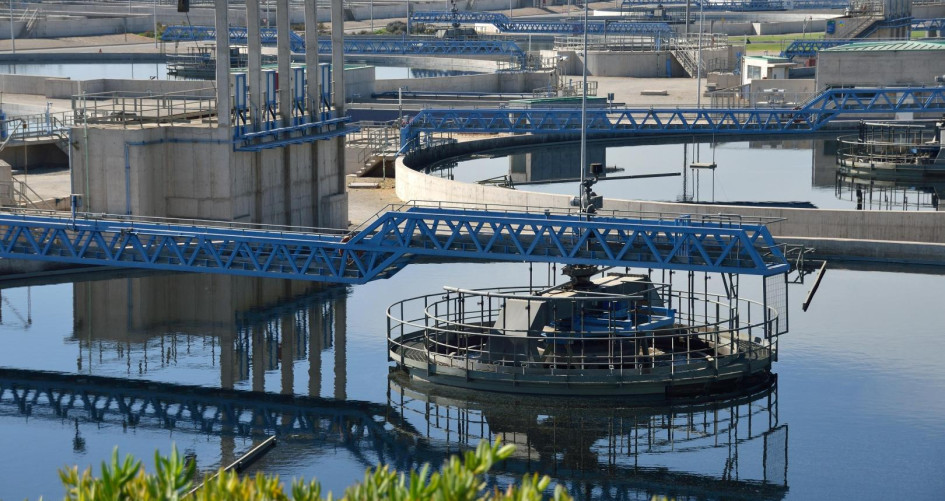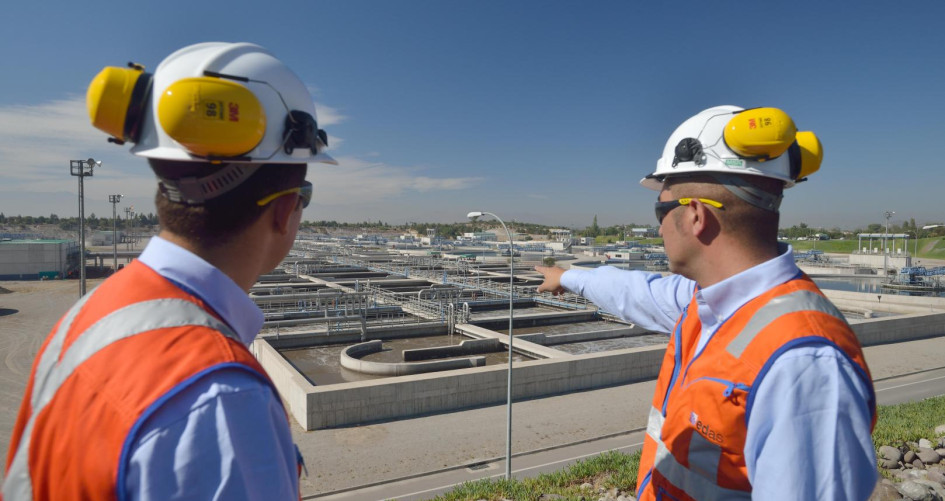Aguas Andinas, Chile’s largest water utility company together with its main shareholder SUEZ, is transforming Santiago’s three wastewater treatment plants into "biofactories” that convert wastewater and sewer sludge, a wastewater treatment by-product, into clean energy. All three treatment plants will be zero waste, energy self-sufficient, and carbon neutral by 2022. The project was launched in 2017 to pioneer innovative circular wastewater treatment solutions in Santiago and to push the boundaries of human health and environment preservation standards in the sector.
Key facts
- 100% of wastewater produced in Santiago’s metropolitan region is treated by Aguas Andinas;
- As of today, energy recovery from sewer sludge leads to the production of 49 GWh of electricity, 177 GWh of natural gas, and 84 GWh of thermal energy in Santiago;
- Over 137,000 tonnes of biosolids from the wastewater treatment plants is reused as fertilizer to grow food.

The problem
Water, perhaps the most important resource for human survival, covers more than two-thirds of our planet. But despite our universal need for clean, drinkable water, most human activity that involves water generates one of the biggest threats to our health and the environment: wastewater.
Anything we flush down the toilet or pour down the drain is considered wastewater.
In 2005, Santiago was only treating 3.6% of its wastewater. The remaining, untreated water and resulting sewer sludge flowed freely into the Mapocho river, a 110-km river that divides Santiago in two. The Mapocho river is an important source of irrigation and potable water for the region. Enteric diseases used to be common because the region’s agricultural areas were irrigated with the polluted river water.
The solution
 But today, Santiago has three wastewater treatment plants that combined consume 134 GWh of energy and process 300,000 tonnes annually of “sewer sludge”.
But today, Santiago has three wastewater treatment plants that combined consume 134 GWh of energy and process 300,000 tonnes annually of “sewer sludge”.
Aguas Andinas decided to use the circular economy model to eliminate waste, fossil energy and pollution from its wastewater treatment processes. The circular economy model aims to keep resources in use for as long as possible.
Wastewater from urban and industrial environments is directed to their biofactories. This waste is loaded with organic matter and other solids, like sand. Thanks to the treatment process, sands will be cleaned and recycled for city construction projects or for gardening and agricultural purposes.
Once the water is treated and disinfected, it is discharged into the natural environment and can serve as a clean source of irrigation for farmers. The farmers then produce food, which eventually returns to the city.
Among the waste produced in biofactories, sewer sludge is recovered through the extraction of biogas that is converted to electricity through cogeneration. This energy is mainly used for self-supply, but can also be fed back into the grid if there is a surplus. Additionally, sludge can be used as fertilizer for agriculture.
Helping the planet
The company achieved its goal of treating 100% of Santiago’s wastewater, which has resulted in the recovery of the Mapocho river and the surrounding ecosystems. The Mapocho river was a dead zone, but after Aguas Andinas fulfilled its objective to clean up 100% of wastewater contamination, life has returned to the river.
Aguas Andinas published the results of the first ecological study carried out with the purpose of quantifying and measuring the impact of the water sanitation effort on the biodiversity of the river. The study determined that life had returned to the Mapocho river when it detected the presence of small catfish, Chilean silverside, and mosquito fish in the river.
Helping people
By treating 100% of Santiago’s wastewater, Aguas Andinas is preventing pollution from entering the Mapocho river via wastewater treatment facilities. Now, irrigated lands are receiving clean water for agriculture; biosolids are being increasingly used in agricultural soils as a fertilizer; and clean water is flowing, minimizing the spread of diseases like hepatitis and cholera.

Spillover effect
Due to population growth, accelerated urbanization, and economic development, the quantity of wastewater generated and its overall pollution load are increasing globally.
The creation of biofactories could have significant scalable benefits both in terms of greenhouse gas mitigation and adaptation to the effects of climate change on water resources.
The management of water networks and water treatment plants has the potential to consume a large part of the national power of a country, thus the conversion of all wastewater treatment plants into carbon-neutral installations could drastically reduce national electricity-derived emissions.
The biofactory project is currently under implementation in SUEZ Spain. Among the pioneering installations involved, the wastewater treatment plant of Granada Sur in Spain aims at reaching zero waste, zero energy and zero emissions by 2020.




Images owned by the activity partners, all rights reserved.



